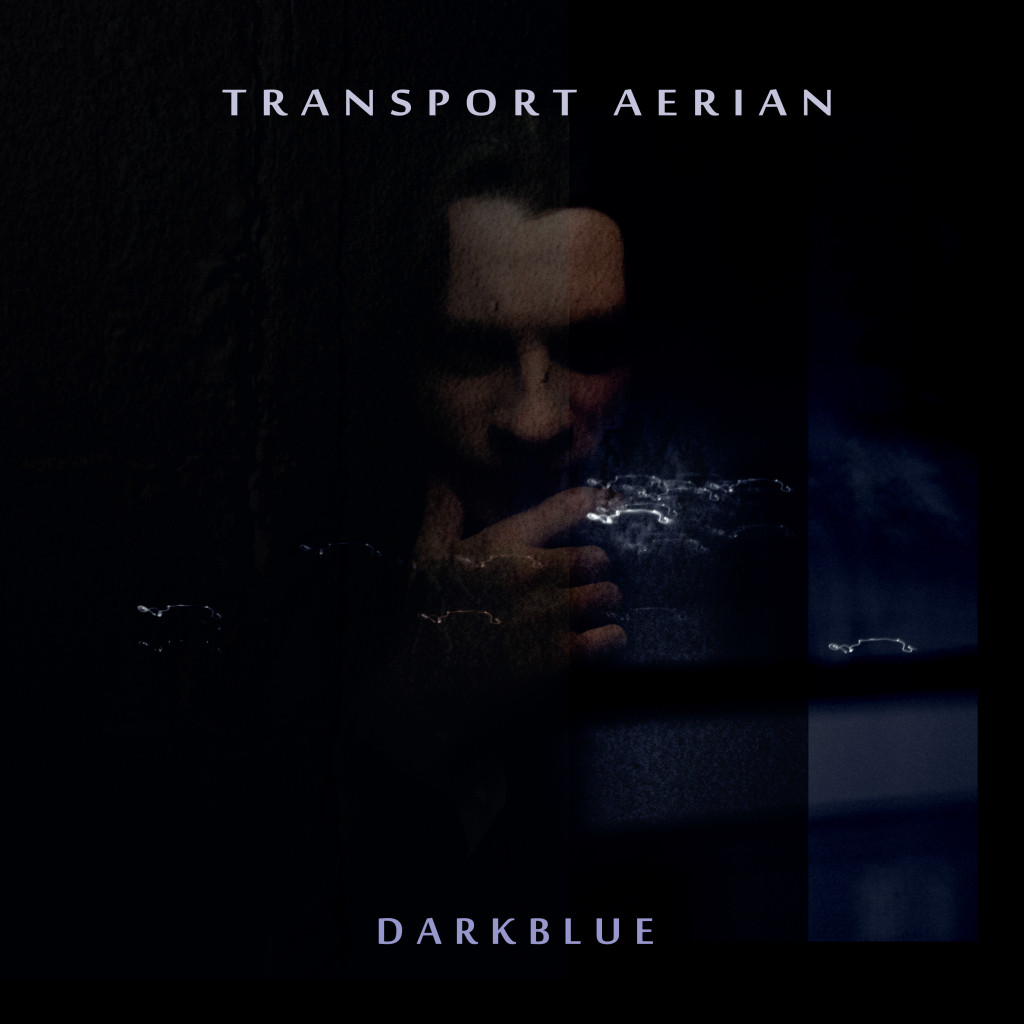In between 2013’s Bleeding, and what would eventually become Darkblue, Transport Aerian released Love.Blood.Live, a compilation of live recordings made during live shows on Bleeding. The idea was to give fans world wide, who would not be able to attend shows in Europe, a feel for what Hamlet and his accomplice at the time Stephan Boeykens were capable of live. In doing that, they also created an nice introduction into the repertoire and style of Transport Aerian at the time.
From the opening track Love it is clear that Transport Aerian is not about party music. The atmosphere is gloomy and dark. The music, minimalistic – a pulsing bass, with (percussive) noises around it gives it an industrial feel, perhaps even more postrock, with some interesting guitar work by Stephan Boeykens near the end. The spoken word vocals of Hamlet tell of someone looking desperately for love in a voice that seems to be on the edge of breaking…
Inspire shows a different face of Hamlet – loose piano notes are the basis of the song, which features a higher pitched, singing vocal, but still with a desperate ring to it. Drums and guitar loop kick in half way to make it more powerful, and near the end we get a haunting guitar and bass piece that is replaced by a horror movie like piano crescendo to finish the track.
With Fog Vision, another post rock like track appears – this time a bit faster played, and with an almost whispering vocal. A vocal that disappears completely for 2 minutes on the instrumental Float – a track by Stephan Boeykens, featuring a single guitar and a loop station, playing picked melodies.
This guitar seems to return briefly at the beginning of Nightsky, but switches to strumming when the vocals come in. In between verses, the guitar plays a simple 3 or 4 note repeating tune, which draw attention in a weird way. When singing on this one, Hamlet suddenly adds an aggressiveness to his vocal that wasn’t there earlier. Involuntarily, in some places he manages to sound like a hoarse version of Klaus Meine – but only if one wants to hear that.
The aggression gives way to melancholy on the slightly sad, moody Winter, which also contains some nice, haunting postrock guitar work.
After this, its time for another instrumental by Stephan Boeykens, once again guitar and loop station, Minor Moody. A moment of peace in between the darkness of the other tracks.
And then, the two closing tracks Triangle Town and Radio Void bring us back to the opening – spoken word, dark music and a stronger beat than elsewhere on the album. Triangle Town also shows a little bit of jazz influences, when the bass and piano join the guitar and speed things up a bit halfway the track.
As I wrote in my review for Darkblue, this is not music to be played as background noise. No music ever should be, but in this case its impossible – you have to listen to be able to appreciate this, and that is what music should be about. Even though it’s dark and gloomy, there are times when this is worth putting on and sitting down for – even if only once, to get a feel for what Transport Aerian is about.











 ogArchives.com
ogArchives.com

